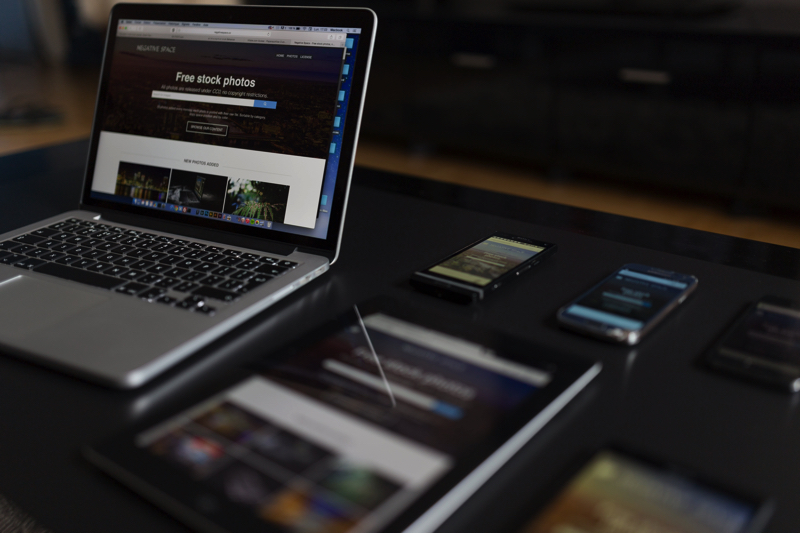
Managing remotely became a new challenge for leaders in recent years. Many had never worked outside their physical office before, trying to create a productive set up at home while scrambling to maintain the company culture and performance was difficult to say the least.
But now remote and hybrid teams have been accepted as the future of work. And while we should be all used to this new way of working many managers are still trying to make a hybrid culture work, trying to maintain productivity and performance without the comforts of a known physical environment.
While there are still many unknowns and things that are beyond our control leaders can positively affect their team’s performance by being consistent with some of the basics. Controlling the controllables is the best place to start, get the fundamentals right and the hybrid challenge becomes less of a challenge.
In this post you will get some valuable tips to managing a hybrid team, some of them are age old concepts that managers and leaders can do to not only increase their own performance but concepts that will contribute to creating a high performing team both remotely and in the office.
Give Clear Direction
Some leaders are good communicators. They share their vision and goals with their team. Breaking them down into meaningful sub goals that can be measured and tracked. Most teams will find goals motivating when communicated clearly, but too often when goals are communicated, the roadmap is unclear, the leader assumes the team members know what to do, but often this is not the case. As a result of not having a clear direction, motivation and momentum will suffer.
In order to get the most from your team, your team need a shared roadmap, when this roadmap is followed on a daily, weekly and monthly basis, communication and performance will improve. What it also does is ensure that there is accountability and transparency.
What to do?
- Ensure that goals are clear,
Clear quantifiable and time bound goals will help an employee to know when they have met the objective. It is also good to prioritise the goal in relation to other existing goals. In this way if the team member has to make a decision for themselves about what merits their time, they are clear where this goal falls in priority to other goals.
- Check for Understanding.
Make sure that your instructions were received in the way you intended. Often we deliver instructions clearly (in our opinion) to hear something different repeated back. This can be due to experience, culture or many other reasons but in order to avoid this from happening asking your team member to repeat what you have told them is the best way to ensure comprehension. This breakdown in communication can become more acute with asynchronous communication, when we use software tools to communicate, email or messaging apps, there is no way to check for interpretation and communication can often be misinterpreted. In this scenario you will also need to check for understanding and ensure that your team know what the instructions are before they proceed with their work.
- Check in and Follow up.
Check in with the team to see how they are getting on. The frequency of check ins will depend on the competence of the people involved. If you are working with senior people who are consistent with their delivery you won’t want them to think you don’t trust them when you can’t see them. Treat each team member according to their capability and motivation not according to what suits you.
A way to overcome and keep progress and commitments visible at all times is to use a team tool. Many teams have adopted Microsoft Teams since the pandemic but not all are taking advantage of the team task tool. If you are not using Microsoft Teams there are many apps like Teamwork, Asana or Evernote Business to help teams to keep track of what’s happening and ensure everyone is working on what they should be working on. Ensuring your team know what they should be doing at all times is essential for performance and productivity.
Check your Processes
A lot of modern teams lack defined processes, leaving team members to their own devices, having to figure out best practise for themselves. This leads to individuals creating their own way of doing things which may not always be the most efficient. All processes in an organisation need agreed and followed but even more so when working remotely.
Understanding your processes will avoid the “this is the way we have always done it” syndrome and ensure that things are being done for the right reasons. Mapping your process will identify areas for improvement and highlight inefficiencies and assist your team in doing their job. You can also map your process from a customer perspective, so mapping the current customer journey might help to improve your service to the customer which may have changed with the current circumstances. By doing this you can make sure that you customers are satisfied with your service and will come back for more, it also helps you to continuously improve on the service you are currently delivering.
Having processes are not only good for your customer and your business, they also help your employees to work more effectively by reducing ambiguity and uncertainty at work. Frustration at work often stems from doubt and uncertainty so by implementing processes you are giving your employees a way of working that will both benefit them and the company on the whole.
If you don’t know where to start, check out this blog post from Process street, a tool that helps you to manage your teams recurring processes and workflows. top 10 business processes.
Give Attention Where Needed
In order to ensure top performance from your team your attention is needed and this becomes more challenging when you are managing a hybrid team. It can be wearisome to have a boss who is never available to answer your questions. When you do manage to speak to them their attention is elsewhere. It is very difficult to perform at your best when you get no support from above. In order to get the most from your people they must be able to command your attention when they need you and not only when you choose to give it to them. While it is important to manage your time and your availability. There needs to be a balance. Lack of availability for your team will lead to lack of engagement from the members and a lack of trust. Trust is the foundation in any team and if there is an absence of trust between the team member and their leader all other attempts at creating a high .
One way to pay more attention to your people is to strengthen your empathy skills, empathy allows us to relate to the emotions or experiences of others, empathy shows we care. If you manage a team of people you should be aware of each person’s strengths and weaknesses and understand them as a person as well as an employee.
If your empathy skills are a little lacking, you can start by practicing your listening skills. When listening try to listen to both the words the person is saying as well as their body language. Try to watch for alignment and recognise when what the person says is not congruent with their body language. Getting to know your team should help increase performance of all involve
Hold Them Accountable
When a leader doesn’t hold his team members accountable for lack of performance, team morale suffers greatly. Far too many leaders are not competent in dealing with accountability issue . Some think they need to give the employee a “telling off” others think if they avoid the situation it may go away. Neither are the approach that give successful long term results.
Holding someone accountable for their actions generally does not require the stick but it does require you to address the subject. Having an honest conversation with the individual who did not meet the expectations their role requires is an action you owe them and one you owe the rest of the team.
Working in a Hybrid environment will suit some people but not others, listen to your team and try and carve out a solution that suits each individual’s needs. It’s never a one size fits all.
Also there are many other reasons why a team members’ performance might slip
- They may not be clear about the goals
- They may not have the skill to complete the job
- They may be feeling anxious or overwhelmed
- They may miss the human interaction when working from home (especially if they are an extrovert)
- They may be missing your support and input
Your job is to find out why it is happening and help the individual find a solution.
Get better at delegation
Delegation is a common problem with middle managers. Mastering this skill is essential to progress to senior management effectively. There are a number of reasons or explanations managers give for not delegating.
- The manager is a perfectionist and wants the job done to his or her standard
- The manager is overloaded with work and doesn’t have the time to explain what they want done
- The manager knows his team is overloaded with work and doesn’t want to add to their stress.
Unless the manager is able to overcome these reasons they will struggle to rise to senior leadership and will find themselves completely overloaded with the current situation. The role of a leader is to enable his team to complete the work but doesn’t do it for them. A leader is an enabler and a facilitator, not a doer.
Ken Blanchard has a Leadership model called Situational Leadership. The model helps you to first understand your natural style of leadership, which they classify under the following 4 styles.
- Directing, closely supervising
- Coaching, encouraging the employee to make decisions
- Supporting ,giving the employee more responsibility to make decisions
- Delegating, handing over responsibility to the employee.
Then you diagnose both the competence level and the commitment level of each employee on your team. When you understand where you employee is at it will help you to both delegate and lead them in a particular way. Some employees lack knowledge and know how so a more directing style of leadership maybe appropriate.
More competent and committed employees will benefit from a delegating style of leadership where you trust them to know what to do. Understanding your employees will help you to delegate more effectively by taking into account their skills level and their current energy levels.
The degree of risk involved with the task and employee competence are the two most important factors to take into account when deciding whether to delegate. All work that is low risk should be delegated.
“Only do work that only you can do, delegate the rest”
You are doing your company a dis-service when you do work that people more junior than you could be doing. You are both costing your organisation money as well as failing to empower your team.
Delegation is a skill that is easily learned, it is often helped by getting more organised and creating time to train people on your team to do the jobs that they should be doing. If you learn to be more organised yourself, you can then pass on some tips to your team members to delegating.
Clear Roles & Responsibilities
Lack of role clarity is a very common issue in busy organisations. Sometimes individuals are recruited without too much thought put into the job specification. Other times the specification is clear but the job evolves. In small organisations this will inevitably happen with fewer employees, everyone will give a dig out when required. But it can cause issues between employees in both small and large organisations. When responsibilities cross over roles and departments, and when some people feel they are doing more than the rest of their team it can create conflict. This becomes even more challenging when working remotely, as the world that one individual is doing can be less visible. Often employees inherit work that they shouldn’t be doing. This can cause frustration and resentment. The question is, is everybody playing to their strengths and doing what is best for both their career advancement and the organisation? What happens at times is that some employees are eager to please and happy to say yes to everything that comes their way or they may have a manager who is too accommodating to everyone else and dumps the load on his own team. What to do?
Now that crisis mode has abated and we move into more business as usual, take some time to look the roles of your team members
- Does everyone have a job spec? If so check how accurate it is
- If the job specification does not reflect the job you want them to do, make sure you update the role with their permission.
- If there are items not in the job role that your employee is doing but shouldn’t be, try to move the task to the person responsible for this work moving forward.
When roles and responsibilities are unclear, not only does productivity suffer but relationships can get damaged too.
Prioritise Self Care
One of the worst things a leader can do for both himself and his team is to not look after himself. Far too many people in Leadership positions are running on empty. Too stressed and overwhelmed to be effective. Too overloaded to be supportive to anyone else.
In order to perform at your best, its essential to look after a couple of basic elements which will help to manage your time, energy and focus more effectively. All High Performers have positive habits. Some of those habits include productivity habits, habits that maximise their energy and habits that keep them present.. The positive outcome from improving your own performance will also organically contribute to improving the performance of your team.
What to do ?
Effective Leaders know their priorities and don’t allow themselves to get distracted or side tracked from their goals. Productivity Habits help leaders to stay focused on the priorities. Creating productivity habits will reduce frustration and overwhelm. Simple habits such as planning and scheduling your time, managing your email and tasks more effectively and and taking control of the things that distract you form doing your best work are simple ways to start.
Good leaders have good energy habits they look after their bodies and and stay energised with the right nutrition, exercise and sleep. If you currently don’t have good habits in this area, start small and build on your positive habits. Change one thing at a time and experience the benefit before moving onto creating another positive habit.
Staying present in the moment, is a skill not many have honed. When you give you full attention to the people around you or the task at hand you will get much better results. Great leaders are aware of the benefits of meditation and mindfulness in improving their focused awareness, better relationship, improved problem solving and decision making are just some of the benefits of adopting a habit of meditation.













